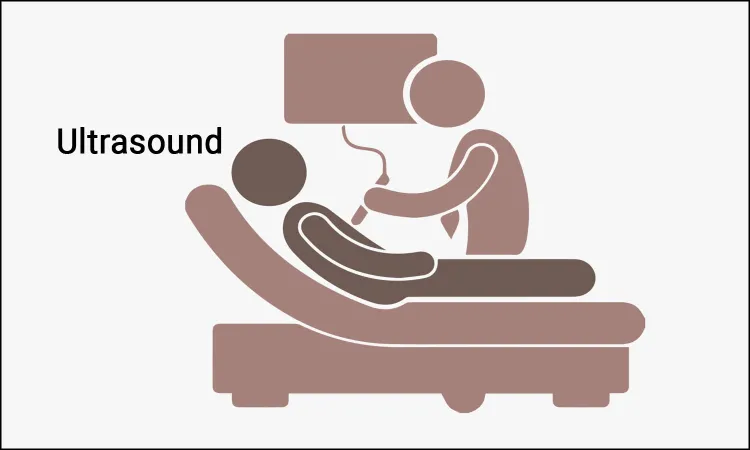- Home
- Medical news & Guidelines
- Anesthesiology
- Cardiology and CTVS
- Critical Care
- Dentistry
- Dermatology
- Diabetes and Endocrinology
- ENT
- Gastroenterology
- Medicine
- Nephrology
- Neurology
- Obstretics-Gynaecology
- Oncology
- Ophthalmology
- Orthopaedics
- Pediatrics-Neonatology
- Psychiatry
- Pulmonology
- Radiology
- Surgery
- Urology
- Laboratory Medicine
- Diet
- Nursing
- Paramedical
- Physiotherapy
- Health news
- Fact Check
- Bone Health Fact Check
- Brain Health Fact Check
- Cancer Related Fact Check
- Child Care Fact Check
- Dental and oral health fact check
- Diabetes and metabolic health fact check
- Diet and Nutrition Fact Check
- Eye and ENT Care Fact Check
- Fitness fact check
- Gut health fact check
- Heart health fact check
- Kidney health fact check
- Medical education fact check
- Men's health fact check
- Respiratory fact check
- Skin and hair care fact check
- Vaccine and Immunization fact check
- Women's health fact check
- AYUSH
- State News
- Andaman and Nicobar Islands
- Andhra Pradesh
- Arunachal Pradesh
- Assam
- Bihar
- Chandigarh
- Chattisgarh
- Dadra and Nagar Haveli
- Daman and Diu
- Delhi
- Goa
- Gujarat
- Haryana
- Himachal Pradesh
- Jammu & Kashmir
- Jharkhand
- Karnataka
- Kerala
- Ladakh
- Lakshadweep
- Madhya Pradesh
- Maharashtra
- Manipur
- Meghalaya
- Mizoram
- Nagaland
- Odisha
- Puducherry
- Punjab
- Rajasthan
- Sikkim
- Tamil Nadu
- Telangana
- Tripura
- Uttar Pradesh
- Uttrakhand
- West Bengal
- Medical Education
- Industry
Ultrasound-guided percutaneous needle biopsy excellent for diagnosing small pleural lesions

Leesburg, VA, November 6, 2020--According to an open-access article in ARRS' American Journal of Roentgenology (AJR), ultrasound (US)-guided percutaneous pleural needle biopsy (PCPNB) has excellent diagnostic accuracy for small pleural lesions.
"US-guided PCPNB is highly likely to be diagnostic for small pleural lesions with nodular morphology on CT or US, or with pleural thickness - 4.5 mm," explained Jongmin Park and colleagues from South Korea's Kyungpook National University.
To determine the diagnostic yield of US-guided PCPNB for small (? 2 cm) pleural lesions and the impact of CT and US morphologic and technical factors, Park's team retrospectively studied 103 patients (73 men, 30 women; mean age, 60.8) who underwent US-guided PCPNB of a small pleural lesion by a single experienced operator from July 2013 to December 2019. Histopathological results established final diagnosis, including from repeat US-guided and CT-guided biopsies, as well as imaging and clinical follow-up. CT and US assessed pleural morphology and thickness, while US measured needle pathway length throughout the pleura.
Summarizing their results, Park et al. noted: "[US-guided PCPNB] of small pleural lesions had a diagnostic accuracy of 85.4%. The yield was 96.4% for nodular CT lesions, 95.0% for diffuse CT lesions with thickness ?4.5 mm, 55.6% for diffuse CT lesions with thickness."
Repeating their assessments on both CT and US 2 weeks later yielded the following representative measurements:
- 82-Year-Old Man Diagnosed With Tuberculous Pleurisy on US-Guided PCPNB (see image)
- 84-Year-Old Man Diagnosed with Pleural Metastasis From Lung Adenocarcinoma on US-Guided PCPNB (see image)
"In multivariable analysis," the authors of this AJR article concluded, "pleural morphology on US and needle pathway length through the pleura independently predicted diagnostic yield," adding that if the pleura is nodular or thicker than 4.5 mm on CT, US-guided PCPNB is justifiable as an initial or repeat diagnostic test
Hina Zahid Joined Medical Dialogue in 2017 with a passion to work as a Reporter. She coordinates with various national and international journals and association and covers all the stories related to Medical guidelines, Medical Journals, rare medical surgeries as well as all the updates in the medical field. Email: editorial@medicaldialogues.in. Contact no. 011-43720751
Dr Kamal Kant Kohli-MBBS, DTCD- a chest specialist with more than 30 years of practice and a flair for writing clinical articles, Dr Kamal Kant Kohli joined Medical Dialogues as a Chief Editor of Medical News. Besides writing articles, as an editor, he proofreads and verifies all the medical content published on Medical Dialogues including those coming from journals, studies,medical conferences,guidelines etc. Email: drkohli@medicaldialogues.in. Contact no. 011-43720751


